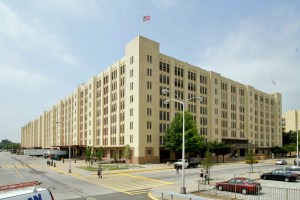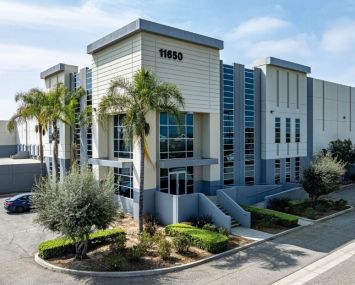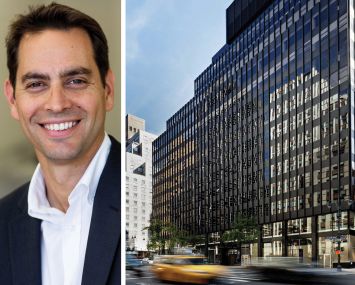The Sun Also Rises: Sunset Park’s Booming Artisanal Economy
By Billy Gray February 12, 2013 9:00 am
reprintsThe Brooklyn Army Terminal plays only a peripheral role in Last Exit to Brooklyn, Hubert Selby Jr.’s dystopian 1964 novel about the Sunset Park and Bay Bridge neighborhoods of Brooklyn. But the compound—still an active base in the book—is the fulcrum around which Mr. Selby’s panoply of broken soldiers, hookers, junkies and hoods circulates.
Last month, the rejuvenated B.A.T. won a major tenant. The artisanal chocolatier Jacques Torres signed for 39,000 square feet in the 95-year-old compound that served as the United States Army’s port of embarkation during World Wars I and II.
“The building has soul,” Mr. Torres said. “When you go there, you touch history. When I visit, I get that cold chill going through me.”
The ghosts of army grunts and the military-industrial complex are not the only historical vestiges that haunt the 4.1-milion-square-foot B.A.T. and the Sunset Park neighborhood that surrounds it. There’s also a residual perception of the forlorn squalor and grit that permeated Mr. Selby’s novel.
“You know, it’s actually not a bad neighborhood,” Mr. Torres said. “You can go there and not get shot.”

Indeed, despite being off the radar of many trend-seekers and urban real estate pioneers perennially on the hunt for New York’s next big neighborhood, Sunset Park has become something of a boomtown. Driving its current rebirth—or at least generating much of its press—is a wave of “New Brooklyn” small-batch retailers, light manufacturers and artists’ studios that have made post-industrial Sunset Park once again a place to make things by hand.
Granted, the high-profile contemporary craftsmen in Sunset Park are not producing carburetors but rather making driving shoes (Marc Joseph NY Inc.), locally sourced and toxin-free record cabinets (Urban Green) and organic ice cream (Blue Marble). Their presence, however, has quickly filled up the neighborhood’s bulky supply of manufacturing-zoned real estate.
“I think Sunset Park is the future,” said Christopher Havens, the director of commercial property at aptsandlofts.com. Mr. Havens has been involved with loft conversions for 15 years and played a substantial role in the staggering gentrification of Dumbo while he was the director of leasing at Two Trees Management.
“It’s the future of creative commercial space,” Mr. Havens said. “The waterfront is very important—you have work spaces, creative spaces, high value-add manufacturing spaces. The neighborhood landlords take care of people who make stuff, not just computer-screen people like Downtown Brooklyn.” (The social networking site Datemyschool.com last month leased 8,500 square feet in the waterfront complex known as Industry City, so technology is also welcome.)
There exists about 15 million square feet of warehouse and light industrial space in Sunset Park, which is generally defined as the area between 65th Street, the Prospect Expressway, Eighth Avenue and the East River. There are 3.1 million usable square feet in the city-owned B.A.T, six million square feet in the 16-building Industry City and another 1.1 million square feet in Federal Building No. 2, which the city sold to Salmar Properties in 2011 for $10 million.
Dean Bodnar, the senior vice president of asset management at the New York City Economic Development Corporation, said that the B.A.T. is currently 97 percent occupied, and that an imminent lease should nudge that number up to 98 percent. Two years ago, the complex was approximately 85 percent occupied.
The 220,000-square-foot Brooklyn Wholesale Meat Market, which the E.D.C. also manages, is 100 percent occupied, up from 92 percent just 12 months ago.
“We’ve done a lot of hard work to get to this point,” Mr. Bodnar said.
The E.D.C. jump-started its local efforts in 2007 when it unveiled the Sunset Park Vision Plan, which targeted a district that had “suffered from substantial disinvestment over the past several decades,” with the goal of making it “a 21st-century model for diverse, dense and environmentally sustainable industry.”
The plan benefited from a partly coincidental confluence of factors. “Locavore” was the New Oxford American Dictionary’s word of the year in 2007, and the borough’s nu-artisan boom was on its way to becoming a global anti-brand. In February of that year, The New York Times trumpeted the new-media-driven “(potential) rise of Silicon Alley 2.0.” And, of course, many tech startups and fledgling beard-oil purveyors had been definitively and perhaps permanently priced out of not just Manhattan but Dumbo, Williamsburg and Long Island City.
Alexis Miesen, the co-owner of Blue Marble, said the company had toured spaces in Brooklyn’s hipper precincts before happily settling down in a 3,000-square-foot Industry City parcel.
“We looked at Williamsburg and Red Hook,” Ms. Miesen said. “And those neighborhoods have the cool factor that Sunset Park doesn’t have quite yet. But as long as I get the job done, I don’t care about the trendiness of an area. It’s exciting here. There’s a palpable creative energy.”


